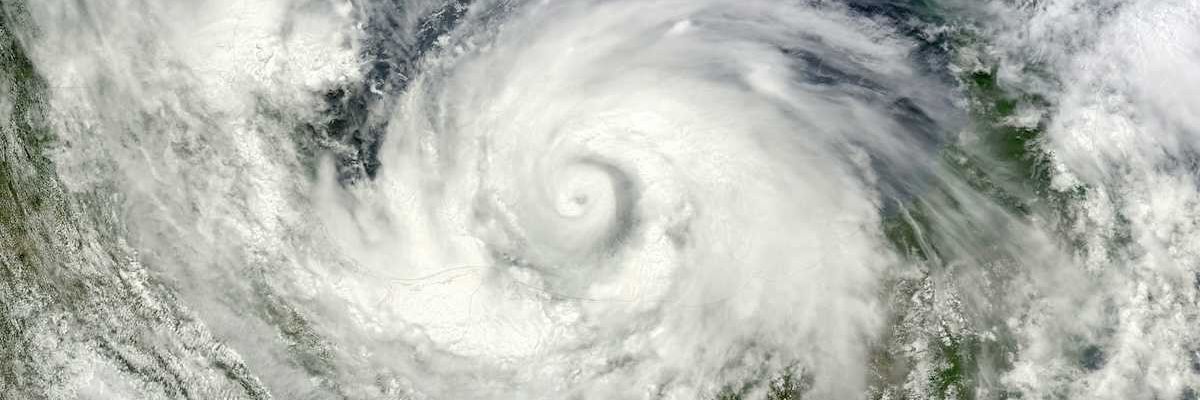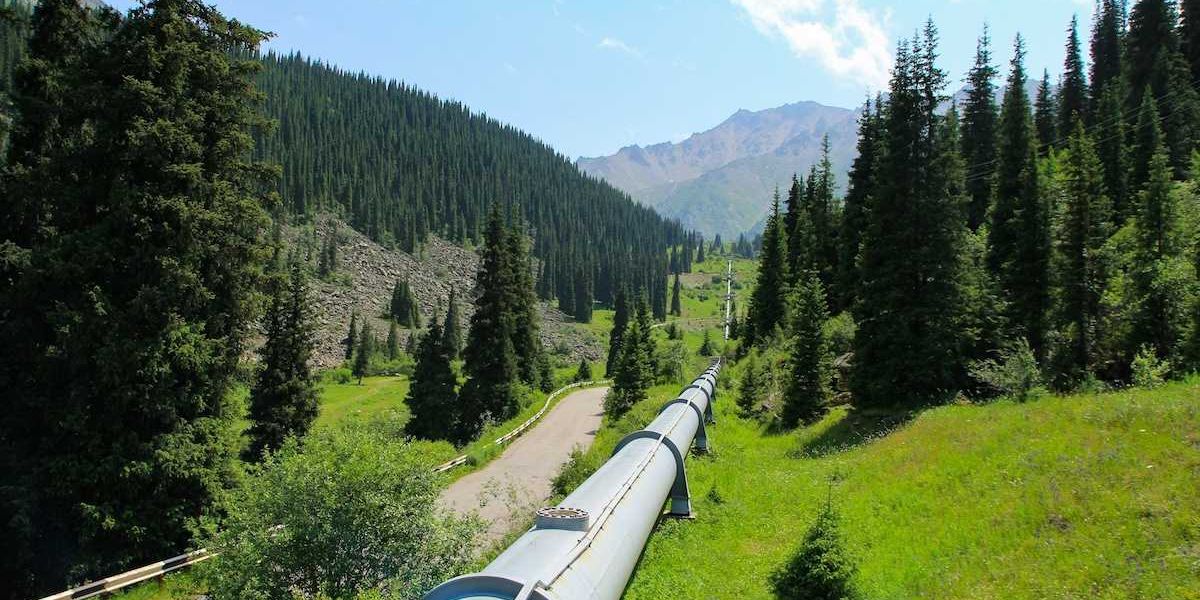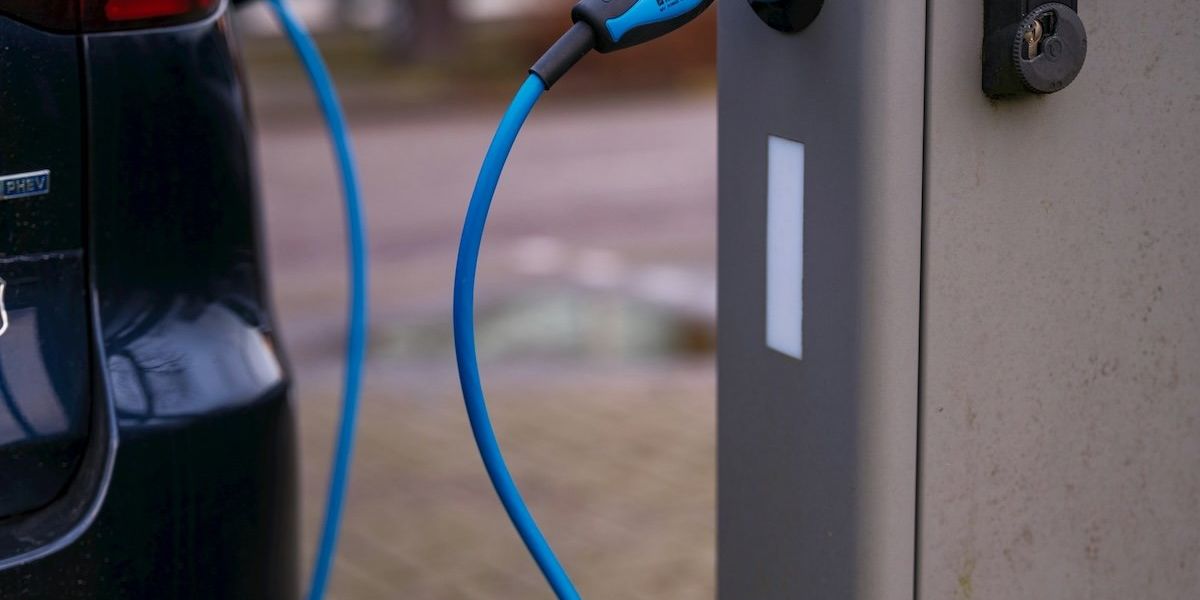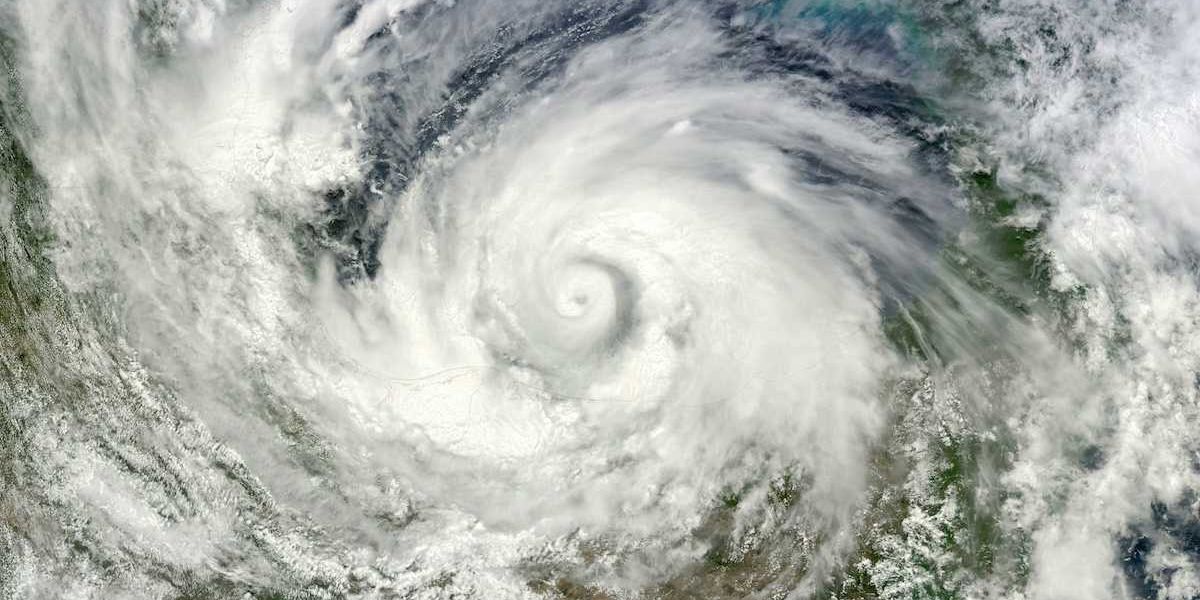mmt
Taking the economic temperature 10 years after A.B. 32.
State leaders say the economy has flourished even as emissions have dropped, but economists say California's fiscal picture is not so easy to read.
Jeff Cohen is a busy man. On a recent Tuesday, he was in Atlanta, in an Uber car on his way to a meeting with a company that recycles chemicals used in refrigerants. Then he had another meeting, this time with an appliance recycler, and finally he rushed to catch a flight to New York for a series of climate events pegged to the U.N. General Assembly.
"All these things are common threads to the stuff we're doing in the California markets," said Cohen, who is a co-founder of EOS Climate, a company that develops and sells greenhouse gas reduction projects for businesses that need to cut their emissions.
California has been important to Cohen, who started his business in 2009 in the hope that either the state or federal government would create a viable carbon market. As the 10th anniversary of California's landmark climate change law draws near, policymakers say its push to slash emissions has been a boon not only to industries like Cohen's but also the economy in general.
Former Republican Gov. Arnold Schwarzenegger, who signed the 2006 measure known as A.B. 32 into law, "guaranteed it wouldn't be a choice between the economy and the environment, that we could do both, and Governor Schwarzenegger was right," said state Sen. Fran Pavley (D), who wrote the bill.
"It's been a success story, and we've got businesses here today who wouldn't be here without the passage of A.B. 32," she said.
By all accounts, California is indeed on track to reach its 2020 target of reducing its emissions to 431 million metric tons (MMT) of carbon dioxide, the level that researchers estimate the state emitted in 1990. Emissions in 2014, the most recent year for which the state has released data, were 441.5 MMT, a decrease of about half a percentage point compared to 2013.
Meanwhile, California's economy since 2006 has jumped from the eighth- to the sixth-largest in the world. Yet the amount of greenhouse gas emissions it produces per person, as well as per dollar of gross domestic product, have fallen. Since 2001, state agencies have reported, its carbon emissions per unit of GDP have fallen 28 percent. Last year, the state was home to 68 percent of all clean technology investment nationwide and led in clean-tech patent registrations, as well, according to environmental advocacy group Next 10. And from 2007 to 2015, California outstripped the United States as a whole in job growth and personal income, according to an analysis released in June by Chapman University.
But the reality of whether California's effort to curb carbon has affected the economy is nuanced.
While California's economy has been relatively buoyant, experts say macroeconomic numbers don't tell the whole story of its climate trajectory. They don't, for example, take the impact of policies that pre-date A.B. 32 into account, or the fact that some of its top industries, like information technology and film production, are not emissions-heavy.
"A.B. 32 imposes a very modest price on carbon," said Lucas Davis, an economics professor at the University of California, Berkeley's business school. "To be able to detect the economic effect of that very modest price on carbon, it would just be impossible. There's just too much noise."
Many CO2 cuts aren't coming from A.B. 32, economists say
California has been on an emissions-cutting path since the late 1970s, when it was the first state in the country to sever the link between utility profits and sales of electricity and natural gas. The policy, called decoupling, set a fixed rate of cost recovery for utilities so that they had no incentive to earn more money by selling more power. California also began setting energy efficiency standards for appliances.
Residential electricity use per person in California has been almost flat since then, although prices have not.
"Our energy prices have been higher than other states' for decades," said Jim Bushnell, an economist at the University of California, Davis, who has advised California on emissions policies. "I feel like we chased out all the energy-intensive industries a long time ago."
California Gov. Jerry Brown (D) has continued his predecessor's crusade to curb greenhouse gas emissions. Photo courtesy of the state of California.
After that, a number of other policies took effect. Emissions associated with electricity began falling as a result of California's renewable portfolio standard, which was first enacted in 2002. It has been strengthened regularly through last year, when Gov. Jerry Brown (D) signed a law setting a target of 50 percent renewables by 2030.
Jeffery Greenblatt, an energy analyst at the Lawrence Berkeley National Laboratory, calculates that the policy that will have had the biggest effect on California's emissions by 2020 is actually a set of automotive standards that Pavley passed in 2002. Known as the "clean cars law," A.B. 1493 dictates greenhouse gas standards for automobiles' tailpipe emissions and has been adopted on the federal level to set fuel economy standards for light-duty vehicles for model years 2009-25.
Without it, California's emissions would be 22 million to 30 million tons higher per year in 2020.
"I've determined it's one of the most powerful emissions-reducing policies," Greenblatt said. The RPS will be responsible for nearly as many reductions: 17 million tons per year in 2020. A 2006 law, S.B. 1368, that forbade utilities to sign new long-term contracts with out-of-state coal plants chips in another 8 million tons of reductions.
Another factor keeping emissions down was the economic recession that began in 2008, after California set its emissions target but before it began most of its policies under A.B. 32. Economists haven't calculated the actual emissions drop linked to the recession, which officially ended in June 2009, but they say it is significant.
"California had a pretty soft economy for many years after its goal was set," said Severin Borenstein, an economics professor at UC Berkeley and a member of a committee that the California Air Resources Board (ARB) set up in 2012-13 to advise it on the design of its cap-and-trade market. "Although it's heating up now, we will easily make the 2020 goal, and that will in large part be due to the weak economy for many years."
'We can make a lot of money' without CO2
EOS Climate is a good example of another macroeconomic trend that has helped to lower California's emissions. While most of the United States is seeing an economic shift from manufacturing to service jobs, California's shift is happening faster.
Since 2009, California has lost 1 percent of its manufacturing jobs, compared to 3.7 percent growth in the United States as a whole. During the same period, California's information services sector grew 10.9 percent, compared to a 1.4 percent decline nationwide, according to Chapman's June analysis.
"A lot of our wealth is derived from IT. As a result, we can make a lot of money without producing much CO2," Greenblatt said. "That has nothing to do with climate legislation; that is just a fact of our modern economy."
As a result, the actual emissions backstop of A.B. 32 — the economywide cap-and-trade system — has been responsible for a relatively small proportion of reductions. ARB itself anticipated in 2014 that the market would account for about 30 percent of reductions.
While no one has made any subsequent projections, Greenblatt's paper found that California would safely meet its 2020 target without it.
"As far as what A.B. 32 has directly done, it's difficult to say, because it has caused the passage of a number of other complementary policies that have worked to reduce emissions more quantitatively in certain sectors," said Greenblatt. "A.B. 32 has an indirect effect by reminding state legislators and everyone else that there is a target that needs to be achieved."
"It's very hard to know what the real net effect of California policies are in sort of direct measurement, because they have such important spillovers," Borenstein said. In some cases, the spillovers could cause emissions to increase elsewhere — if for example, California utilities get out of coal contracts, only for out-of-state utilities to snap them up.
"What I think is pretty clear is the cap-and-trade market has had very little impact because the price has been very low," he said.
Does Calif. still need cap and trade?
While California's climate policies have achieved their intended purpose thus far, experts say it will be much harder to balance environmental and economic progress in the future.
Brown has continued Schwarzenegger's carbon-cutting crusade, signing a new bill earlier this month to further cut the state's emissions 40 percent below 1990 levels by 2030.
Emissions that are under the current cap have declined almost 10 percent since their peak in 2004, but other sectors have actually increased. Agriculture and forestry, for example, are up 7 percent since 2004, to 36 million tons of CO2 equivalent. Brown signed another bill Monday to regulate emissions from agriculture and wood fires, which envisions controlling methane from oil and gas operations and dairy cows, among other emitters.
Transportation and building efficiency are also ripe targets for emissions reductions. Greenblatt found that the biggest future reductions could come from a plan at the California Public Utilities Commission to retrofit existing buildings — but that the state will have to start retrofitting 3 percent of existing buildings per year by 2020 in order to be on track for 2030 and 2050 goals.
"The business community is doing just fine in reducing their emissions without having to resort to cap and trade," Greenblatt said. "Taking another 40 percent out of a growing economy in 10 years' time is going to be very ambitious."
Economists expect cap and trade to play a much greater role in the years after 2020, presuming it makes it past current legal and political hurdles. While prices in the market are currently at the state-set minimum of around $12.70 per ton, the ratcheting down of the cap after 2020 could push them much higher.
"If cap and trade is still even permitted in that regime, I think that it could become extremely important in future years, and it may even play a role between now and 2020," Greenblatt said.
That would also benefit EOS Climate, which makes more money if the value of carbon offsets goes up. Higher demand for offsets could also lead to ARB expanding the types of offset projects that it accepts.
Based in San Francisco, EOS Climate's initial focus was to find sources of ozone-depleting substances, take them to facilities that destroy them, then sell the emissions reductions as carbon offsets. It's sold more than 5 million tons of offsets stemming from the destruction of refrigerants, insulation and other chlorofluorocarbons that contribute to ozone depletion as well as global warming; more than 90 percent of those have been for California's cap-and-trade market.
"California's always going to be key for our business," said Cohen, EOS Climate's senior vice president, who helped start the company after a 25-year career with U.S. EPA and a two-year stint at ARB. "It's been a great market and it has a big impact, but it's also been a great model for other jurisdictions to lead to and follow."
Twitter: @debra_kahn Email: dkahn@eenews.net
Climate regs could have modest impact on electricity prices - EIA.
Electricity prices in the later years of U.S. EPA's Clean Power Plan might be 3 percent higher than without the rule, according to an early release of part of the U.S. Energy Information Administration's outlook for 2016.
Electricity prices in the later years of U.S. EPA's Clean Power Plan might be 3 percent higher than without the rule, according to an early release of part of the U.S. Energy Information Administration's outlook for 2016.
Those figures are significantly lower than analyses cited by opponents of the climate rule that project 11 to 14 percent increases (ClimateWire, May 16).
"The national average prices are higher as the rule's introduced, and it peaks about 2025, but by 2040 they're back pretty much to the same place," said Paul Holtberg, EIA's program lead on the analysis.
In response to its critics, EPA often insists that while the Clean Power Plan may result in higher electricity prices, electricity bills will be lower under the regulation because of increased energy efficiency and reduced demand. EIA's case study found electric demand would be 2 percent lower in 2030 with the Clean Power Plan than without it, which is a far less significant decrease in demand than EPA projects, Holtberg said.
But some said the numbers could still bolster EPA's case that the Clean Power Plan won't leave Americans with much higher electricity bills.
"Importantly, this 3 percent increase is limited just to electricity prices; EIA assumes that in the Clean Power Plan, electricity providers purchase CO2 allowances, the revenues of which are rebated to ratepayer bills," Synapse Energy Economics Inc. said in a statement following the outlook's release. "As a result, the full effect on out-of-pocket spending on electricity by ratepayers is lower than 3 percent, or even zero."
However, experts say the rule's final costs could vary depending on gas prices, future policies and how states implement the regulation.
EIA's first study modeled what the power sector would look like if states chose to cap carbon dioxide emissions from power plants and let generators trade allowances within set regions. Researchers examined the impact of auctioning those allowances and rebating the revenues to customers.
But not all states are likely to pursue that route. Further analysis that EIA will release starting in mid-June will explore other options. They will cover what would happen if states adopt wider trading systems, aim for an annual emissions rate, give allowances to generators rather than auction them, or use a mix of rate-based and mass-based standards. EIA will also look at what might happen if EPA continued to require a decline in emissions past 2030.
Holtberg said the challenge to modeling impacts of the Clean Power Plan is that "everybody's guessing on what's going to be the one states choose to do or how is it going to be mixed."
EIA will publish the full report in July. The agency cautioned that the analysis incorporates only existing laws and policies and "is not intended to be a most likely prediction of the future."
Clean Power Plan 'exaggerates' current trends
Under the Clean Power Plan, coal power would fall to 18 percent of U.S. electricity generation in 2040, compared with 33 percent last year, according to EIA's outlook.
In contrast, coal would make up 26 percent of power generation in 2040 without EPA's greenhouse gas regulation.
Clean Power Plan accelerates shift to
lower-carbon options for generation
Under one implementation option for the Clean Power Plan, the U.S. Energy Information Administration projects that coal's share of electricity generation would fall from 33 percent to 18 percent in 2040. Without the plan, coal would represent 26 percent of generation in 2040. Graph courtesy of the EIA.
Renewable power and natural gas will grow and coal will decline regardless of the Clean Power Plan. Renewable tax credits, reduced solar photovoltaic capital costs and low natural gas prices will all contribute to that shift, although it would happen faster under EPA's rule, EIA found.
"That's the bottom line," Holtberg said. "It just exaggerates it, that's all. Even if you didn't have the Clean Power Plan, you'd get more gas and renewables."
Rhodium Group Director John Larsen agreed, saying, "Coal is going to decline as far of a share of generation, no matter what; it's just a question of how much."
But that doesn't mean the Clean Power Plan won't make a substantial difference in how much coal is burned in the United States, Larsen said.
"I think gas is playing a bigger role; coal is subsiding right now, and has been," he said. "At least what EIA is showing is that if you don't have the Clean Power Plan, those trends kind of flatten out. ... With the Clean Power Plan, you keep that declining trend of coal going out to 2030."
EIA's new figures show far more growth in renewable power than previous projections. Wind and solar growth bolstered by extended renewable energy tax incentives could cause a short-term decline in natural gas-fired power between 2015 and 2021. But then natural gas generation could grow significantly, increasing by more than 67 percent until 2040, when it would be by far the biggest power source.
EPA's rule would also spur more CO2 reductions. Under the Clean Power Plan, annual power-sector carbon dioxide emissions would fall below current levels in 2030 through 2040. Without it, they would be higher than today.
In 2005, the power sector contributed 2,416 million metric tons (MMT) of carbon dioxide to the atmosphere. In 2015, that figure fell to 1,891 MMT. With the Clean Power Plan, annual levels would continue to decline to 1,550 MMT in 2030 through 2040. Without it, they would reach 1,959 MMT in 2040.
State choices could yield lower electricity bills
Another report, released by the Rhodium Group and the Center for Strategic and International Studies today, also finds the Clean Power Plan and tax extenders passed by Congress in December would drive a shift from coal and toward renewables.
The Rhodium report stressed that while overall emissions reductions will be about the same no matter how states choose to meet EPA's targets, how electricity is produced and how much it costs could vary significantly depending on states' choices.
"It's really in the hands of the states to drive whatever kind of changes in the energy markets they want to see," Larsen said.
The Rhodium Group listed some of the biggest choices states face. First, states can cap overall emissions under a mass-based system, or they can restrict how much carbon is produced per unit of power under a rate-based system. States also must choose whether to distribute carbon allowances to generators or auction them and then direct revenues back to ratepayers. Another key choice is whether to limit emissions from new power plants, instead of just from existing plants.
Electricity bills rise in both scenarios Rhodium modeled, but they rise higher when states cap emissions than when they aim for an average rate.
However, "under a mass-based plan, the impact of electricity bill increases could be mitigated or offset by directing allowance value to consumer rate relief," the report said.
EIA assumed states would use this strategy in the model it released yesterday, Larsen noted. But he added that if the Clean Power Plan is upheld, it's likely that states will face a big fight over how to handle allowances because so much money is at stake.
"That is probably more politically contentious than any other plan component," Larsen said.
Twitter: @emilyhholden Email: eholden@eenews.net
TTIP: Chevron lobbied for controversial legal right as 'environmental deterrent.'
U.S. oil company wanted EU-US trade deal to give foreign investors the legal right to challenge government decision, documents show.
Chevron lobbied the EU to give foreign investors the legal right to challenge government decisions in a major US-EU trade deal because it would act as a deterrent against laws such as fracking bans, the Guardian can reveal.
Environmentalists have long-warned that the Transatlantic Trade and Investment Partnership’s (TTIP) investor state dispute settlement (ISDS) commercial courts risk a regulatory chill, with governments backing away from measures limiting fossil fuel extraction for fear of lawsuits. But this is the first time that a major oil firm has corroborated their fears.
Details of the US oil company’s lobby drive in Brussels two years ago emerged as EU and US negotiators sat down in New York this week to begin a 13th round of talks aimed at securing the TTIP deal. France and Germany have both previously said they want the access to ISDS removed from TTIP.
“ISDS has only been used once by Chevron, in its litigation against Ecuador,” say the minutes of a meeting in April 2014 between unnamed Chevron executives and European commission officials, which the Guardian obtained under access to documents laws. “Yet, Chevron argues that the mere existence of ISDS is important as it acts as a deterrent.”
Chevron has explored for shale gas in Romania and Poland in recent years, though it has since withdrawn the shale projects in both countries. The company is currently pursuing a $9.5bn suit against Ecuador’s government at an ISDS court in the Hague, for allowing indigenous people to sue the firm - for the same amount of money - over allegedly illegal practices dating back more than 20 years.
“Chevron’s case is often used as an example not to have ISDS,” say the minutes, which include commentary by EU officials. “This is a misperception since the case clearly proves the exact opposite. The company is raising awareness on this issue in Brussels and has handed over a more detailed analysis of the case.”
The US multinational, which takes in $19bn a year, says that a deal was reached with the Ecuadorean government in 1998 relieving it of any environmental liabilities.
But indigenous communities in Ecuador protest that they are still living with the consequences of an environmental disaster caused by the dumping of billions of gallons of toxic sludge into Amazonian streams, lakes and hundreds of unlined pits.
“This document [the minutes] shows that the power to use investment arbitration as a shackle on environmental regulations is a key reason why multinationals like Chevron defend them,” said Cecilia Olivet, a researcher at the Transnational Institute and member of the presidential commission auditing Ecuador’s bilateral investment treaties.
“Pressure on public budgets means the mere threat of a multi-million dollar international arbitration lawsuit can make governments reluctant to implement social or environmental protection measures that could affect the interests of foreign investors.”
Chevron is currently exercising a media blackout ahead of an earnings release on Friday and did not immediately respond to a request for comment.
In a submission to the US trade representative in 2013, the firm argued that the existence of ISDS panels “increases the likelihood” of disputes being settled outside them.
Under fair and equal treatment provisions, these panels can rule against social and environmental laws enacted by national parliaments, where these conflict with a company’s profit expectations at the time that an investment was made.
In one high profile case, the US company Lone Pine is suing the Canadian state of Quebec for $250m over a fracking ban, under Nafta treaty provisions. But campaigners say that the regulatory chill effect can be more subtle.
New Zealand postponed plans to introduce stricter rules on cigarette labelling in 2013 after lawsuits by Philip Morris International against Uruguay and Australia in ISDS tribunals.
The city of Hamburg agreed to relax clean water rules in 2011 after an arbitration investment suit by Vattenfall, while Canada reversed a ban on the toxic chemical MMT and agreed a $13m payment in 1998, as a result of an ISDS claim by Ethyl.
Indonesia also granted the mining company Newmont an exemption to laws requiring local processing of raw materials before export in 2014, to settle an ISDS arbitration suit.
Peter Kirby, a partner in the Canadian law firm Fasken Martineau described ISDS tribunals as: “a lobbying tool in the sense that you can go in and say, ‘OK, if you do this, we will be suing you for compensation.’ It does change behaviour in certain cases.”
The issue has provoked fierce opposition, with an estimated 35,000 people protesting the new trade rules in Hannover over the weekend, during a visit by President Obama.
Redacted minutes of separate meetings between the commission and executives from BP, Shell and ExxonMobil in December 2013 show that the fossil fuels industry as a whole strongly backed an EU-US free trade deal.
BP was the “most outspoken” supporter, describing TTIP as “the opportunity to discuss energy and competitiveness in an international context” and welcoming the new global energy trade rules that could result.
The minutes say that “it appeared, however, that especially the transparency rules and to a lesser extent the offshore safety rules are rather of concern for the companies.”
BP and ExxonMobil said that they would also like to see TTIP deal with renewable energy subsidies, planned EU regulations on tar sands and the 1920 Jones Act, a US law which allows sailors injured at sea to claim compensation, among other things.
The firms mentioned that they would relay the information they had been given by EU officials to their colleagues in Washington DC and might come back with “further requests”.
In the documents, the commission appears keen to win the oil firms’ lobbying clout to an EU initiative to lift a US embargo on crude and gas exports.
The minutes list meetings planned by EU officials with Total, GDF Suez, Repsol, OMV, EDF, Areva, Eurogas and the Association of Oil and Gas Producers.
The commission also planned to “reach out further” to ConocoPhillips, and to Chevron.
The Health and Environmental Alliance and Centre for International Environment Law this week launched a new campaign calling for EU legislation on toxic chemicals to kept out of any TTIP trade deal.
El Niño may impact India's economic growth, inflation.
NICHE BUSINESS PUB. PH. According to an HSBC report, an El Niño-induced below normal monsoon this year could have a bearing on India's economic growth and inflation in fiscal year 2014-15, reports media.
According to an HSBC report, an El Niño-induced below normal monsoon this year could have a bearing on India's economic growth and inflation in fiscal year 2014-15, reports media.
"Inflation may remain sticky in the current financial year as a possible El Niño effect on the monsoon is likely to push up food prices and geopolitical uncertainties are likely to pump up global commodity rates," reports media.
El Niño-induced drought poses a 50-75 basis points risk to India's FY 2015 growth forecast of 5.4 percent and could result in a spike in inflation levels to around 8-10 percent, a Bank of America-Merrill Lynch (BofA-ML) report said.
El Nino effect on the monsoon refers to the warmer-than-average sea surface temperature in the central and eastern tropical Pacific Ocean. This condition occurs every 4-12 years and had last impacted India's monsoon in 2009, leading to the worst drought in almost four decades.
An ASSOCHAM study on pulses has cautioned that if El Niño weighs on the Monsoon and rains are deficient, pulses production will get severely hit and affect the households' budget the way onion brought tears to the common-man in the recent past and may give pain to the stomache.
The major pulse-producing states - Madhya Pradesh, Maharashtra, Rajasthan, Uttar Pradesh, Karnataka and Andhra Pradesh, which together account for about 80 percent of the total production may witness less rainfall affecting the output and prices.
The demand-supply mismatch of pulses is causing further pressure on the prices of pulses which may shoot in the near future and therefore, timely precautionary steps need to be taken, the ASSOCHAM recent paper said.
India's pulses production of nearly around 18.60 MMT against the demand 22 MMT in India, has witnessed a very slow growth of mere 4.7 percent (CAGR) in the last five years and the unseasonal rains are also likely to impact the output further this year.
ASSOCHAM President, Rana Kapoor while commenting on the trend said prices in India are dependent upon global production and supply situation in key exporting nations such as Canada, Myanmar, Australia and USA.
"India's large dependence on imports, higher prices and declining per capital availability and consumption of pulses have been matter of concern," adds the ASSOCHAM paper.
Despite the rise in production in last three years, domestic demand will continue to be more than the supplies in coming years. It shows that India is expected to produce around 21 million tonnes (mt) of pulses till 2016, while demand is projected to touch around 23 mt in the next few years, adds the paper.
The production of pulses which is grown in India such as gram, tur, masoor, urad, chick peas, rajma etc has been hovering around 11-15 mt since the late 70s. But, from 2010-11 (July-June) onwards there has been a sharp surge in output and production reached a record 18.24 mt in 2010-11. It continued to remain around 17-18 mt levels in the next few years and is projected to reach almost 18.5-19 mt in 2013-14.
ASSOCHAM believes that improving research and development in pulses to develop more high yielding varieties and focusing more on bringing more pulses growing area under irrigation could be another way out.
India is expected to see below normal monsoon this year with Met department forecasting 95 percent rainfall after a good spell of four years.
India Meteorological Department (IMD) officials said the monsoon is expected to be below normal because of the El Niño effect, which is generally associated with the warming of ocean water.









